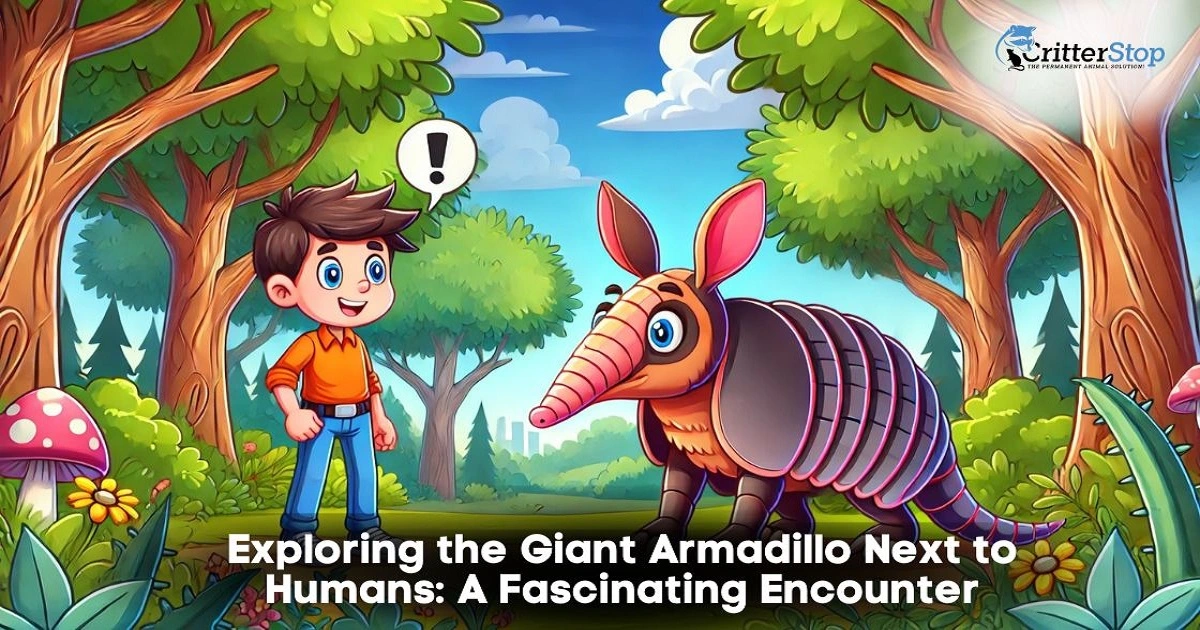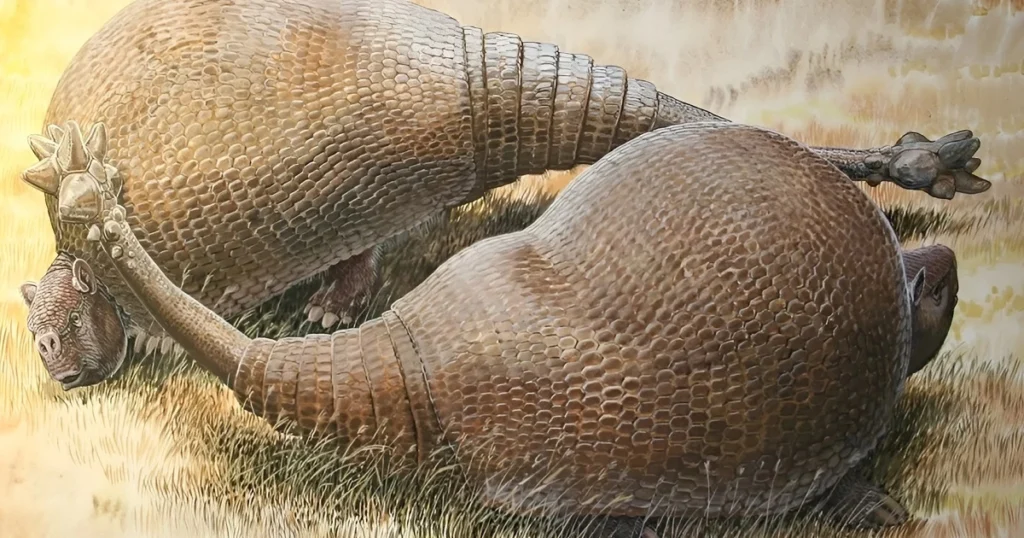
The giant armadillo (Priodontes maximus) is a captivating creature known for its size and intriguing interactions with humans. Found primarily in South America, spanning regions from Brazil to Paraguay, these armadillos inhabit diverse ecosystems, from grasslands to rainforests.

The giant armadillo is the largest species of its kind, reaching up to 100 centimeters in length and weighing as much as 60 kilograms. Its shell, composed of bony plates covered by keratin scales, provides a formidable defense against predators. This adaptation allows it to thrive in various environments where it can excavate burrows and termite mounds using powerful claws, often leaving behind distinct traces of its feeding behavior.
Known for its solitary nature and nocturnal habits, the giant armadillo emerges at night to forage for ants, termites, and other insects, relying on its keen sense of smell to locate prey. This behavior underscores its role as a vital component of its ecosystem's food web.
Reproduction in giant armadillos is a fascinating process. Females typically give birth to a single offspring after a gestation period of about 120 days. The young armadillo, born blind and hairless, matures slowly under the care of its mother, learning essential survival skills until it can fend for itself in the wild.

Despite its robust defenses and adaptive behaviors, the giant armadillo faces significant threats due to habitat loss from deforestation, human encroachment, and risks from hunting and road accidents. Conservation efforts are critical to protecting its remaining habitats and raising awareness about its conservation status.
Recent scientific research has illuminated the giant armadillo's ecology and behavior. Techniques such as camera traps and tracking studies have provided valuable insights into its movements and habitat preferences, contributing to broader wildlife conservation and biodiversity preservation efforts.
These creatures often hold cultural significance in regions where giant armadillos coexist with human populations. They appear in local folklore and traditions as symbols of resilience and adaptability. Their presence underscores the importance of balancing human development with conservation efforts to ensure their survival for future generations.

If you encounter wildlife issues, such as ants invading your bedroom, consider contacting Critter Stop at (214) 234-2616 for a free inspection and humane removal solutions. Critter Stop has earned a fantastic reputation and positive customer reviews online due to its commitment to high-quality work and excellent customer service. Let Critter Stop help you resolve wildlife challenges while ensuring humans' and animals' safety and well-being.
The giant armadillo exemplifies nature's diversity and resilience, adapting to environmental challenges while captivating human imagination and scientific inquiry. As efforts continue to protect and study these remarkable creatures, understanding their ecological role becomes increasingly vital for conservation and sustainable coexistence.
Here are some commonly asked questions about giant armadillos, exploring their size, characteristics, and historical significance. Discover fascinating insights into these unique creatures below:
The giant armadillo can reach up to 100 centimeters in length and weigh as much as 60 kilograms, making it significantly larger than most other armadillo species.
The largest recorded giant armadillo was approximately 1 meter in length and weighed around 60 kilograms, showcasing its impressive size compared to other armadillos.
The largest armadillo ever recorded measured about 1 meter in length and weighed approximately 60 kilograms, highlighting its substantial size within the armadillo species.
The largest armadillo on record was found primarily in South America, particularly in regions from Brazil to Paraguay, where these creatures thrive in various habitats.
Large armadillos are typically measured by their length and weight. The giant armadillo often reaches lengths of up to 100 centimeters and weighs up to 60 kilograms, providing a substantial frame compared to other armadillo species.
Yes, fossil records of giant armadillos have been discovered, contributing valuable insights into their evolutionary history and the development of their distinctive traits over time.
Huge armadillos, like the giant armadillo (Priodontes maximus), can be distinguished by their size. They typically measure much larger in length and weight than other smaller armadillos found in the same regions.
Visit our Critter Library and learn more about our furry friends